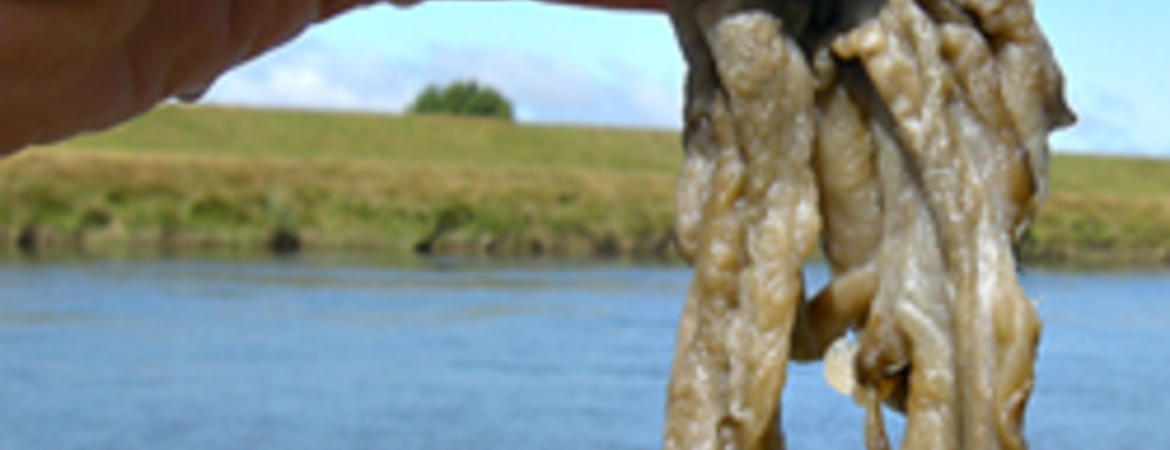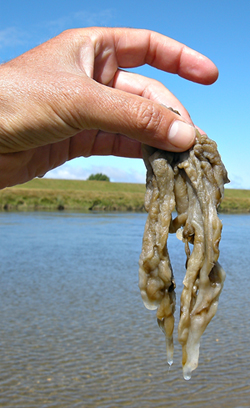
The Situation: Didymo or rock snot, is a highly invasive species of freshwater diatom that can form large and extensive mats in rivers, streams, and lakes. Didymo is native to cool temperate areas of the northern Hemisphere including Europe, North America, and Asia. In 2004, didymo was discovered infesting freshwater rivers in the South Island of New Zealand, the first record of this diatom in the Southern Hemisphere. Even in parts of what is presumed to be the native range of didymo, this pest is starting to expand its range aggressively. The reasons for this change in behavior are not known.
The Problem: Because of the extensive smothering of rocks and other underwater structures, habitat and food sources can be changed or eliminated to the detriment of other organisms living in infested waterways. Excessive biomass accumulations associated with didymo result from asexual reproduction. When the diatom divides, the stalk that was attaching the diatom to a rock or some other hard surface divides also. As this process repeats itself a mass of branched interconnected stalks results. It is the aggregation of these stalks, which are highly resistant to degradation, that causes the formation of large mats of didymo, or rock snot. Outbreaks of didymo are thought to have contributed to the declines of freshwater invertebrate and vertebrate populations, especially fish that have important recreational value (e.g., trout fisheries). This relationship between didymo and fish declines is an area of active research. The recreational value of infested waterways is severely reduced because large clumps of rock snot floating down stream catch on fishing flies, spinners, and hooks demanding almost constant removal each time line is retrieved.
Didymo is almost certainly moved into new areas via contaminated fishing equipment (e.g., boots, waders, and line) and boats. Sanitation measures should be employed to reduce the spread of moving didymo from infested to uninfested areas. Such practices include removal of all obvious clumps of didymo from boats and fishing equipment. Soaking fishing gear in bleach or saltwater solutions, heating for prolonged periods, or freezing for several consecutive days can kill sterilize fishing gear by killing didymo.
Distribution: Didymo is thought to be native to some areas of North America, but historically it was rare in areas in which it was present. Currently, didymo is expanding its range in North America and its presence has been confirmed from Vermont, New Hampshire, New York, Virginia, West Virginia, Tennessee, Colorado, Arkansas, Wyoming, Utah, Idaho, Montana, Washington State, North Dakota, South Dakota, Alaska, and in Canada from British Columbia and Alberta. In California, didymo has been found in the South Fork of the American River.
Want more? Go to the CISR website for more on Didymo (Rock Snot)
